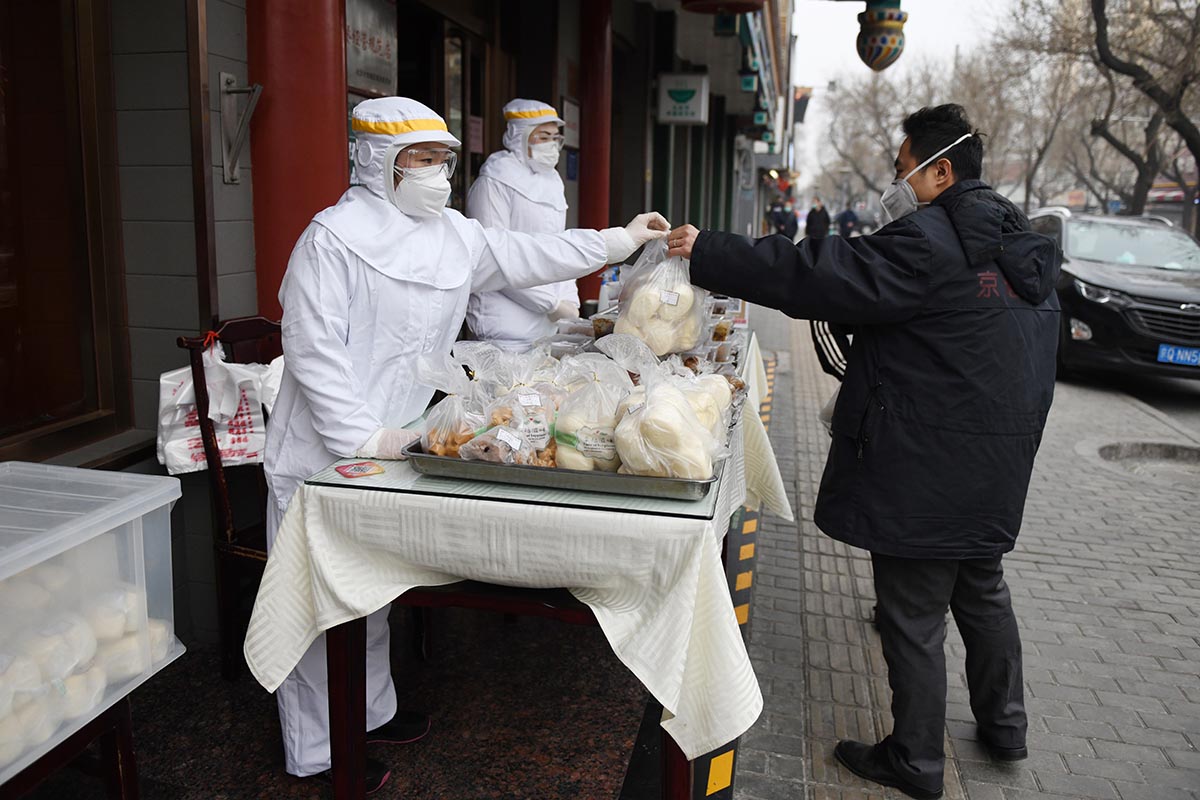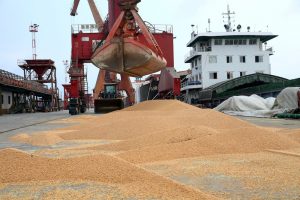(ATF) – Food prices have risen dramatically in China, according to the latest information from the National Bureau of Statistics. The increases reported in February have been blamed on supply chain disruptions – manpower shortages and ‘risk avoidance’ because of the Covid-19 outbreak – and a spike in demand because citizens are hoarding some items.
The latest Consumer Price Index (CPI) and Producer Price Index data – for February 2020 – was posted today on the website of China’s National Bureau of Statistics.
In February, food prices rose 4.3% month-on-month and have risen 21.9% over the past year. The price of fresh food continues to be high. Potato prices rose 16% month-on-month, while pork prices rose 9.3% month-on-month, and the price of fresh vegetables, fresh fruits, and aquatic products rose 9.5%, 4.8%, and 3.0%, respectively.
The main reason for these increases were supply chain disruption. The shortage of manpower has made the distribution of materials more difficult and this cost has increased. The production and supply of some products was affected and meant it was hard to meet market demands in a timely manner.
However, the level of demand was affected by factors such as “home” requirements and “risk-avoidance”. The Bureau said some residents were hoarding items, especially instant noodles, meat products and frozen food.
In February, the supply of eggs was plentiful, and the price dropped by 6.9% month-on-month. On average from January to February, food prices rose 21.3% year-on-year.
Overall prices ‘stable’
However, Zhao Maohong, director of the Bureau’s Urban Department, said that overall prices in February were generally stable. CPI figures continued to rise but the growth rate declined, although the price of food rose more, while PPI figures stabilised slightly.
The Consumer Price Index is still at a high level, although the rate at which it is rising has declined somewhat. In February, the national CPI rose by 0.8% month-on-month. It has increased by 5.3% over the same period last year.
Prices of non-essential goods are basically stable. In February, due to measures to prevent and control Covid-19 epidemic, some commercial and service outlets ceased operation, and consumer demand for some “non-necessities” was also stifled. With supply and demand reduced, prices were basically stable, and the prices of some goods even fell.
The price of industrial consumer goods dropped between 0.1% to 0.4% month-on-month and rose just 0.3% year-on-year. Energy prices dropped, with the cost of gasoline and diesel falling 5.7% and 6.2% month-on-month, and residential coal and liquefied petroleum gas prices down 1.0% and 0.4% month-on-month.
The launch of spring clothing was delayed, and clothing prices fell 0.3% month-on-month. The price of services went from a 1.0% month-on-month increase in January to a 0.2% decrease in February. Overall, service prices rose by 0.6% year-on-year. The price of medical services rose slightly – 0.1% month-on-month, while the prices of air tickets, haircuts and hotel accommodation fell by 7.8%, 2.5%, and 1.0% respectively.
Excluding food and energy prices, core CPI went from a 0.5% increase in January to a decrease of 0.1% in February and rose by 1.0% year-on-year.
Production stoppages and weaker demand
The Producer Price Index declined slightly in February, due to the epidemic and seasonal factors, with some industrial companies stopping production and weaker demand. The national PPI was flat from last month to a decline of 0.5%, and a year-on-year increase of 0.1% to 0.4%. On average from January to February, PPI decreased by 0.2% compared with the same period last year.
Prices of petroleum-related industries fluctuated significantly. The international crude oil market was severely impacted in February, and prices fell sharply, affecting the domestic oil and related industries. The price of oil and gas extraction went from a 4.3% rise last month to a decrease of 11%, while the price of oil, coal and other fuel processing rose from 1.8% to 4.4%.
The price of downstream chemical raw materials, chemical manufacturing and chemical fiber fell to varying degrees in the manufacturing of rubber and plastic products. On a year-on-year basis, the costs of these industries have also decreased by a range of 0.4% to 10.7%. The total impact on the PPI decline is about 0.44 percentage points, which is the main reason for the PPI’s year-on-year change.
The prices of coal, steel and non-ferrous metals fell steadily. In February, the supply and demand of coal was basically balanced, and the price fell from a 0.6% month-on-month to a flat month. But the cost of ferrous metal smelting and rolling processing industry fell by 1.4% month-on-month, affected by the increase in steel stocks. The impact on copper prices meant a continued fall, with the cost of copper smelting down by 3.6%.
Pharmaceutical manufacturing prices rose slightly. With the epidemic, companies producing medical protective material actively resumed production to ensure supply, but were affected by factors such as rising raw material prices and rising logistics costs. The price of pharmaceutical manufacturing also rose in February by 0.3% month-on-month, while the price of disinfection products increased by 14.8%, and the price of sanitary materials increased by 1.5%.
























